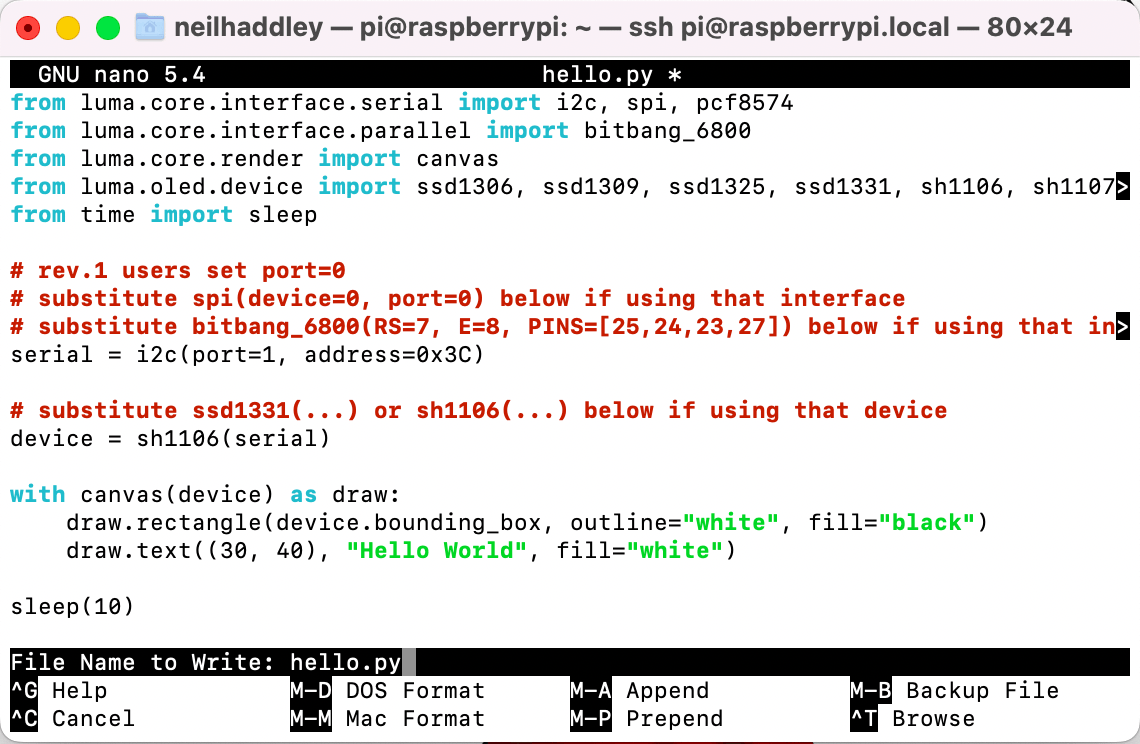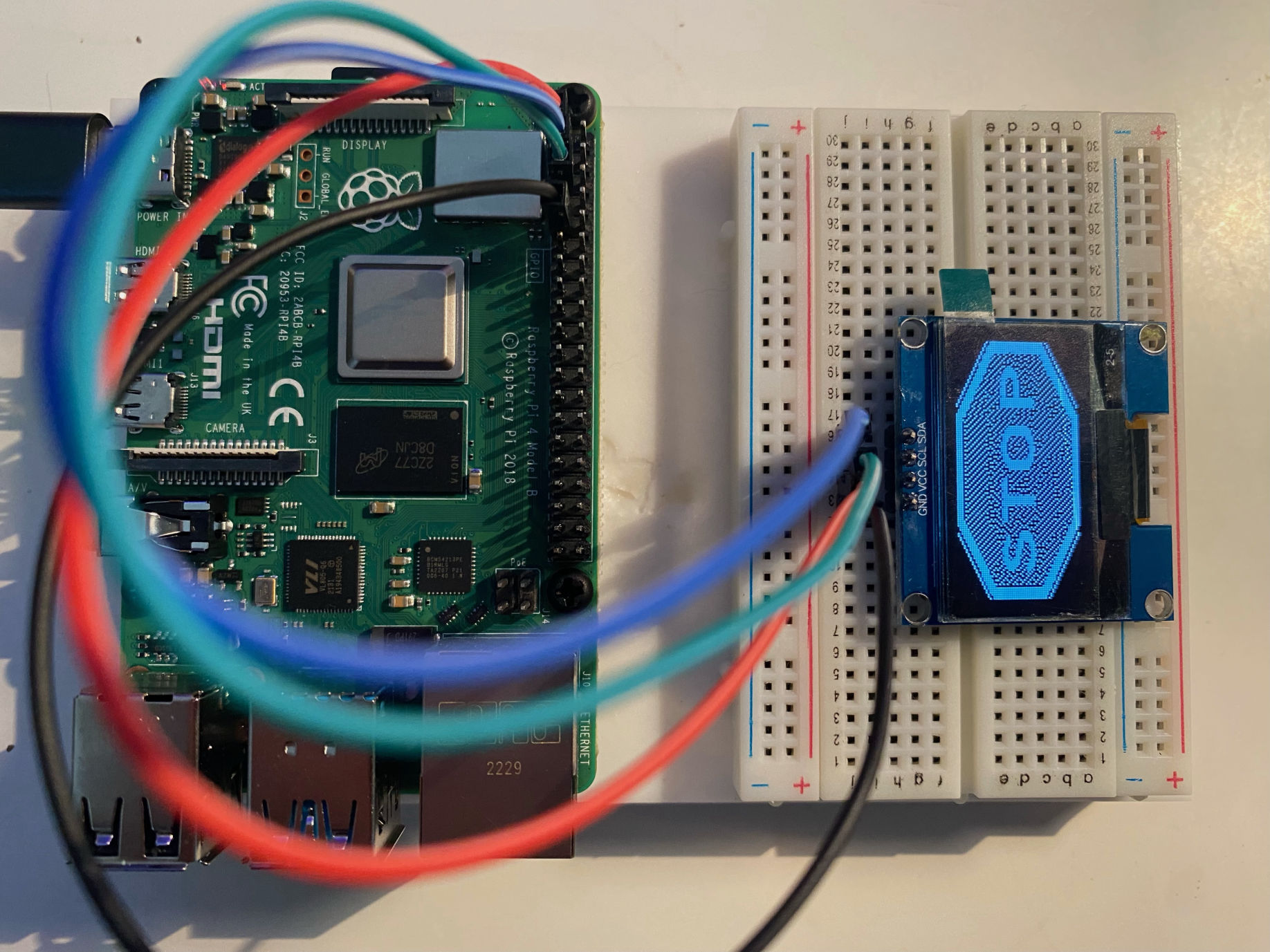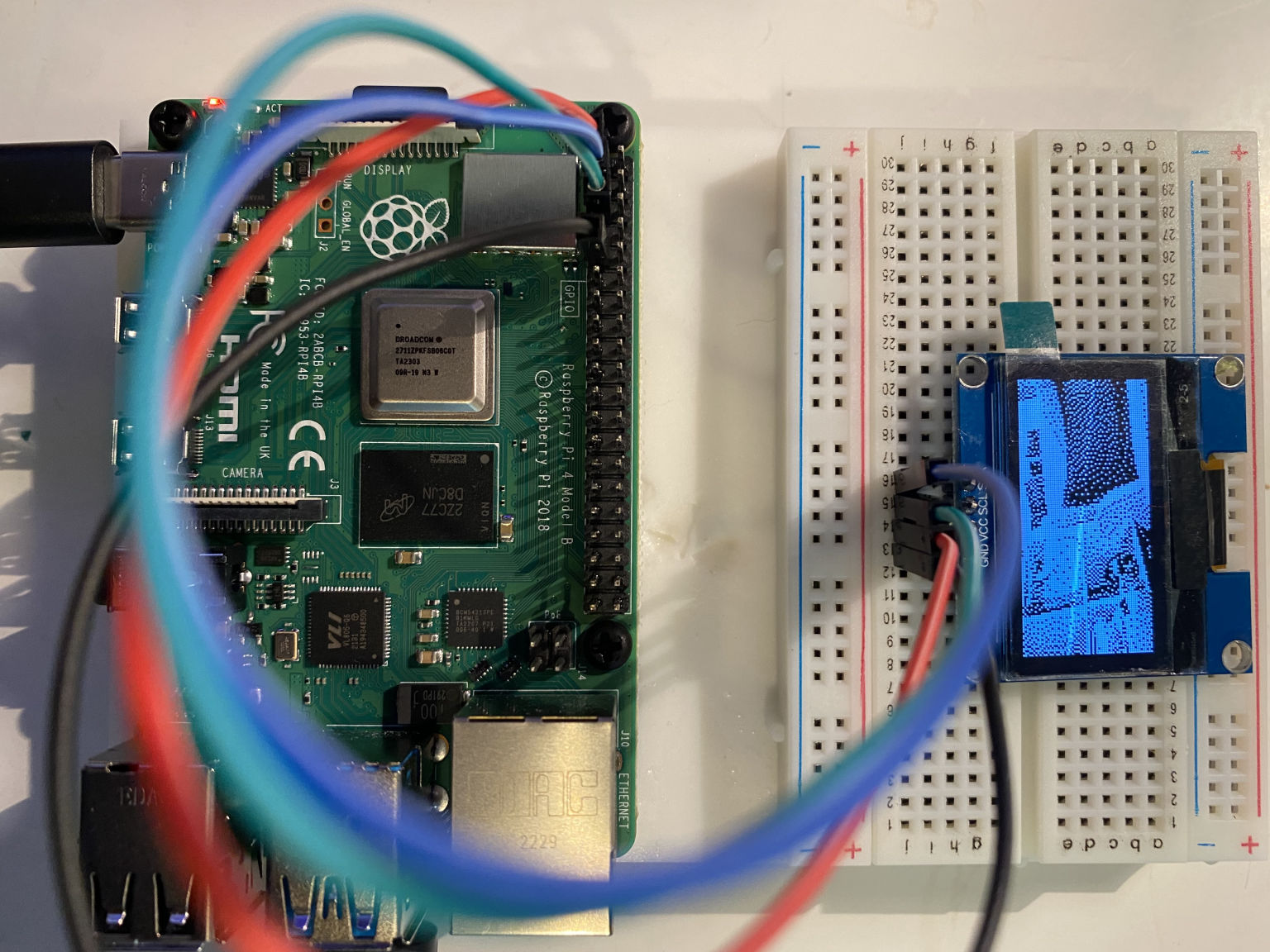The Raspberry Pi can output text (and simple graphics) to an OLED display using Python.

OLED wiring

i2cdetect -y 1
I installed the Luma-OLED driver by following these instructions:
https://luma-oled.readthedocs.io/en/latest/install.html
I installed the driver with this command
$ sudo -H pip3 install --upgrade luma.oled
I enabled I2C communications using the raspi-config application
$ sudo raspi-config
Interface Options | I2C | enable ARM I2C
I followed the steps described by Alexander Rüedlinger to allow non-root users to access i2c devices (specifically the OLED display).
1) Create new user group called i2c:
$ sudo groupadd i2c
2) Change the group ownership of /dev/i2c-1 to i2c:
$ sudo chown :i2c /dev/i2c-1
3) Change the file permissions of the device /dev/i2c-1 so users of the i2c group can read and write to the device:
$ sudo chmod g+rw /dev/i2c-1
4) Add your user to the group i2c:
$ sudo usermod -aG i2c <username>

Python code
hello.py

The hello.py code running on configured hardware
I downloaded a stop sign image and updated the hello.py code to display the image on the OLED display.

Stop sign
stop_sign_display.py
OpenCV (Open Source Computer Vision Library) is an open-source computer vision and machine learning software library. It provides a comprehensive set of tools and functions that enable developers to perform various computer vision tasks, such as image and video processing, object detection, facial recognition, and feature extraction.
I used the cv2 library to read frames from a dog video I downloaded from:
https://pixabay.com/videos/puppy-dog-playful-beach-sand-play-4740/
Then I updated the code to send image captured by the webcam to the OLED display.

Dog video
dog_display_window_and_oled.py

Webcam
webcam_display_window_and_oled.py